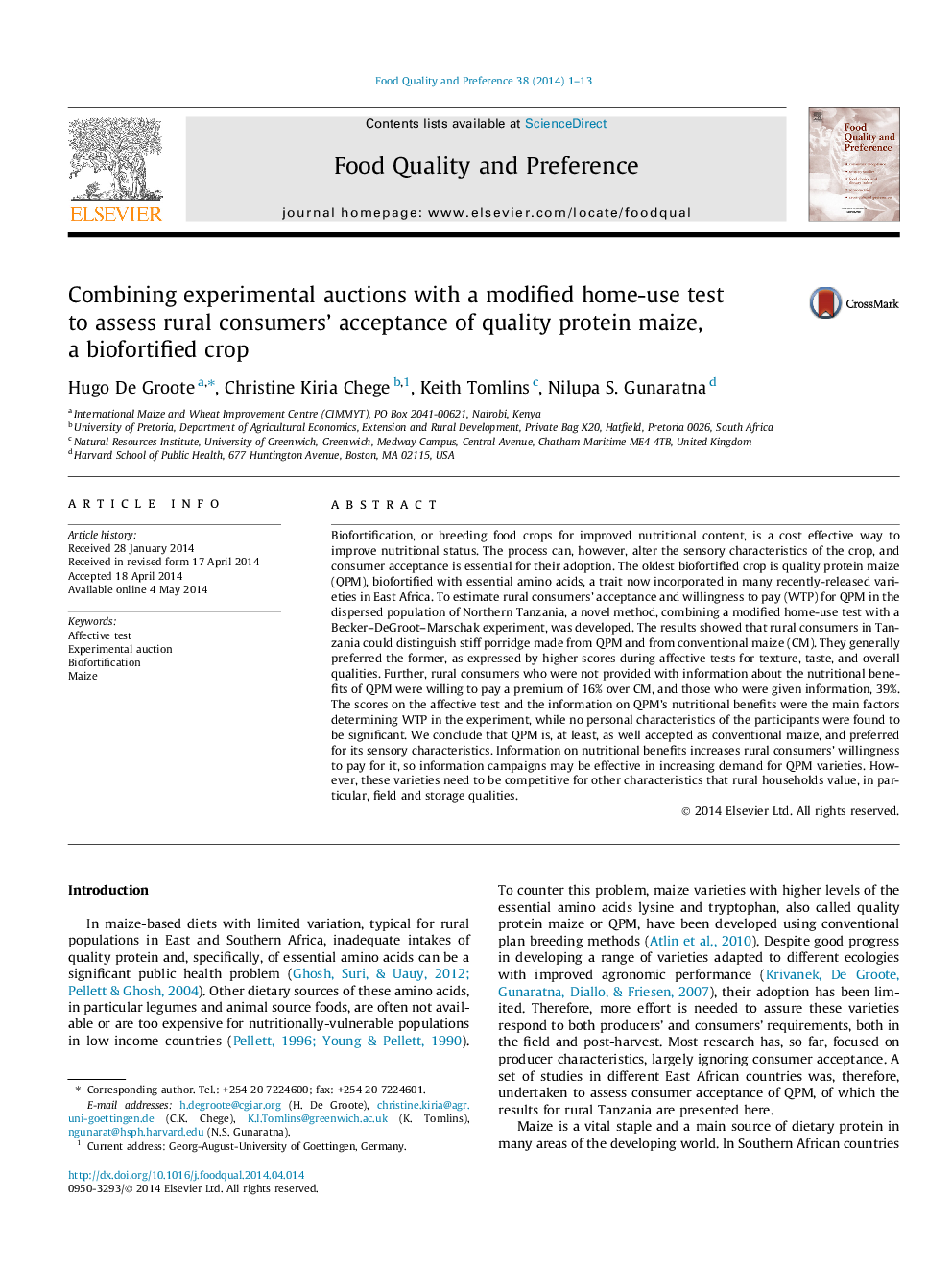| کد مقاله | کد نشریه | سال انتشار | مقاله انگلیسی | نسخه تمام متن |
|---|---|---|---|---|
| 6261417 | 1613159 | 2014 | 13 صفحه PDF | دانلود رایگان |

- Modifying home-use testing into a single session is low-cost, convenient and effective.
- Combined with an economic experiment, it assesses acceptance of biofortified crops.
- This new method suits dispersed rural populations, the target of biofortification.
- Rural Tanzanian consumers prefer quality protein maize (QPM) to conventional maize.
- Providing information on nutritional quality increases the QPM premium from 19% to 39%.
Biofortification, or breeding food crops for improved nutritional content, is a cost effective way to improve nutritional status. The process can, however, alter the sensory characteristics of the crop, and consumer acceptance is essential for their adoption. The oldest biofortified crop is quality protein maize (QPM), biofortified with essential amino acids, a trait now incorporated in many recently-released varieties in East Africa. To estimate rural consumers' acceptance and willingness to pay (WTP) for QPM in the dispersed population of Northern Tanzania, a novel method, combining a modified home-use test with a Becker-DeGroot-Marschak experiment, was developed. The results showed that rural consumers in Tanzania could distinguish stiff porridge made from QPM and from conventional maize (CM). They generally preferred the former, as expressed by higher scores during affective tests for texture, taste, and overall qualities. Further, rural consumers who were not provided with information about the nutritional benefits of QPM were willing to pay a premium of 16% over CM, and those who were given information, 39%. The scores on the affective test and the information on QPM's nutritional benefits were the main factors determining WTP in the experiment, while no personal characteristics of the participants were found to be significant. We conclude that QPM is, at least, as well accepted as conventional maize, and preferred for its sensory characteristics. Information on nutritional benefits increases rural consumers' willingness to pay for it, so information campaigns may be effective in increasing demand for QPM varieties. However, these varieties need to be competitive for other characteristics that rural households value, in particular, field and storage qualities.
Journal: Food Quality and Preference - Volume 38, December 2014, Pages 1-13